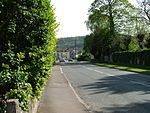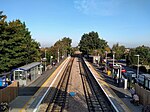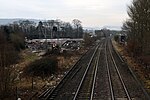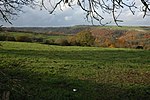Leonard Stanley

Leonard Stanley, or Stanley St.Leonard, is a village and parish in Gloucestershire, England, 95 miles (150 km) west of London and 3.5 miles (5.5 km) southwest of the town of Stroud. Situated beneath the Cotswold escarpment overlooking the Severn Vale, the surrounding land is mainly given over to agricultural use. The village is made up of some 600 houses and has an estimated population of 1,545 as of 2019. The hamlet of Stanley Downton lies less than a mile to the north and lies within the parish. In 1970, the village was twinned with the commune of Dozulé in the Calvados region of Normandy, northern France. Originally a Saxon village, a priory dedicated to St. Leonard was founded in c.1130. As the village grew, Leonard Stanley developed into a busy weaving and agricultural centre with inns, a marketplace, and two annual fairs. Whilst agricultural usage continues, in recent years the village has become a dormitory village for the nearby towns and cities. The last village shop and post office closed in the early 2000s.
Excerpt from the Wikipedia article Leonard Stanley (License: CC BY-SA 3.0, Authors, Images).Leonard Stanley
Bath Road,
Geographical coordinates (GPS) Address Nearby Places Show on map
Geographical coordinates (GPS)
| Latitude | Longitude |
|---|---|
| N 51.73 ° | E -2.2858 ° |
Address
Bath Road
GL10 3LN , Leonard Stanley
England, United Kingdom
Open on Google Maps









